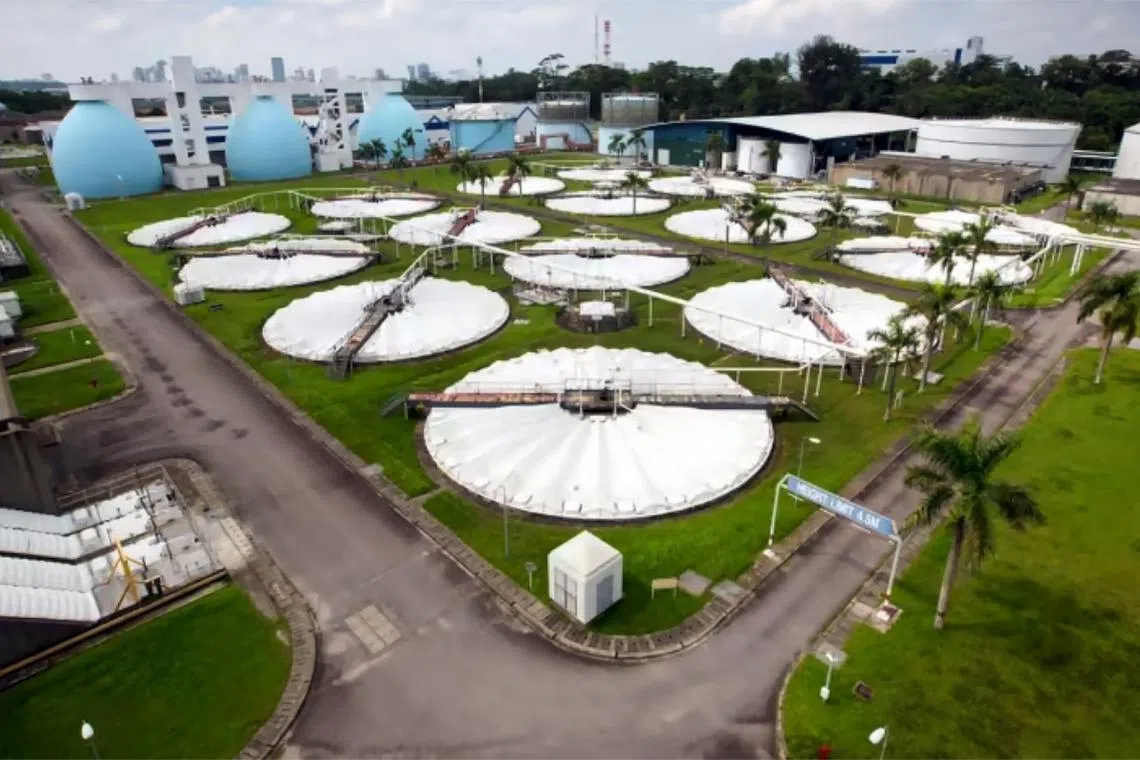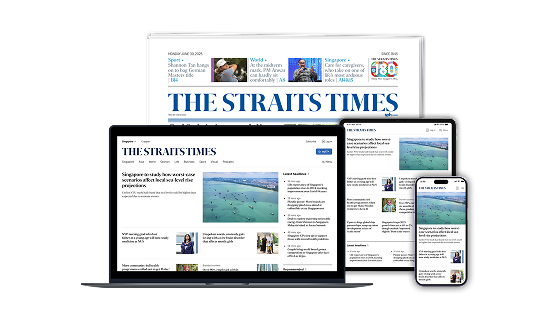Ecological concerns over moving of Kranji water plant: Authorities explain why move is needed
Sign up now: Get ST's newsletters delivered to your inbox

The Kranji Water Reclamation Plant will be shifted farther north, and will have an increased capacity to meet the used water and Newater needs in north and north-west Singapore when it is redeveloped by 2034.
PHOTO: PUB
Follow topic:
SINGAPORE - The Kranji Water Reclamation Plant (WRP) cannot be redeveloped at its current site due to construction and operational challenges, said the authorities.
Its planned move will also free up space for developments that would create new jobs and complement the Sungei Kadut Eco-District, they added.
The authorities were responding to queries from The Straits Times on concerns raised by nature groups over the ecological impact of the new plant.
The plant, currently located next to Kranji MRT station, will be moved about 300m north, and will have increased capacity to meet the used water and Newater needs in north and north-west Singapore when it is ready by 2034.
The new site, however, cuts across a route traversed by wildlife. This route connects the Rail Corridor and the Mandai Mangrove and Mudflat, raising concerns among nature groups
To avert this, several nature groups have asked the authorities to study the feasibility of an in-situ option.
When asked by ST whether this option was considered, national water agency PUB, the Urban Redevelopment Authority and National Parks Board (NParks) said that redeveloping the plant at its current site would require a nuisance buffer, which would encroach into a large part of the racecourse site and limit its redevelopment potential for housing.
Another consideration is that the plant, being critical to serving the water needs of the northern and north-western areas, would have to remain operational during the construction of the new facilities.
“Thus, there are some construction and operational challenges with developing the new Kranji WRP in situ,” said the agencies.
They also noted that the shift could free up space for developments – such as industrial workplaces – that would “greatly benefit from the proximity to the MRT station”.
“Additionally, the change would complement the development of the Sungei Kadut Eco-District’s growth, offering more industrial job opportunities and, in turn, create more jobs closer to new housing in the upcoming redevelopment of the Singapore Racecourse site,” said the agencies.
They added that the development of the plant at the new site was made possible with the realignment of the Rail Corridor to run alongside Woodlands Road to Kranji MRT station.
Noting the Nature Society (Singapore), or NSS, proposal to widen the realigned Rail Corridor to strengthen ecological connectivity, the agencies reiterated their intention to make the corridor functionally wider where possible and to strengthen ecological connectivity with “enhanced plantings”.
NParks said it is studying ways to enhance the ecological connectivity along Sungei Pang Sua and Sungei Mandai – both of which are canals that link the coastal habitat of the Mandai Mangrove and Mudflat to the Rail Corridor.
The agencies will also explore ways to enhance ecological connectivity between the Central Catchment Nature Reserve and the Mandai Mangrove and Mudflat, which are key habitats in the region.
Asked whether enhancing the connectivity of Sungei Pang Sua and Sungei Mandai would be ecologically beneficial, NSS spokesman Tony O’ Dempsey called for an additional 2.6ha of land to be set aside to widen the realigned Rail Corridor so that it can serve as a viable wildlife corridor.
The existing ecological corridor – which will soon be lost to redevelopment – has a width of 50m. After it is realigned, it will have an effective planting width of only 14.5m, which would not be sufficient to facilitate the movement of small mammals, said Mr O’ Dempsey. He noted that scientific literature calls for a width of at least 60m.
In addition, a 3m-wide and 2m-deep drain, which appears to be redundant at the realigned Rail Corridor, currently blocks off connectivity for terrestrial wildlife.
This drain, along with a second parallel drain, could be combined into a swale that would allow terrestrial fauna to cross, said Mr O’ Dempsey. A swale is a drainage channel with gently sloped sides.
Mr Muhammad Nasry, executive director of Singapore Youth Voices for Biodiversity, said Sungei Pang Sua leads to a mudflat in Mandai, which is important for migratory shorebirds, but it is not critical for connectivity as these species do not fly far inland.
In contrast, Sungei Mandai opens into the Mandai Mangrove and Mudflat, which supports a wider array of resident fauna. Many of these, such as the straw-headed bulbul or rufous woodpecker, benefit greatly from improved connectivity.
Mr Nasry has urged the authorities to prioritise the strengthening of ecological connectivity along Sungei Mandai – between the Mandai area and the Central Catchment Nature Reserve.

Furthermore, while Sungei Pang Sua connects to several forest patches along the Rail Corridor, it is rather long, with several intersecting major roads that put ground-dwelling creatures like the sunda pangolin at risk of becoming roadkill.
Mr Nasry said it may not be meaningful to invest time and resources to enhance portions of the canal, only for the corridor to end abruptly without viable connections to suitable habitat.
He stressed that good ecological corridors should be wide and dense with vegetation. This can help to support forest-specialist species that are well adapted to darker and relatively quieter forests.
If planned corridors – like the realigned Rail Corridor – are too narrow, it is likely that light and noise pollution from nearby roads will deter the movement of these species, worsening the impacts of habitat fragmentation that they already face.


